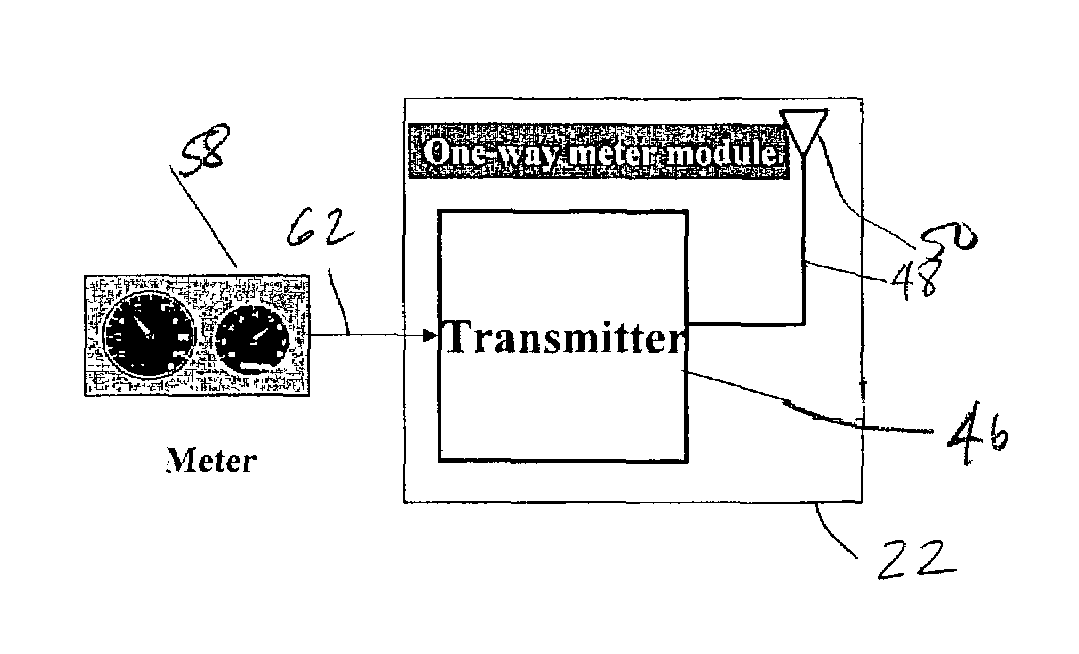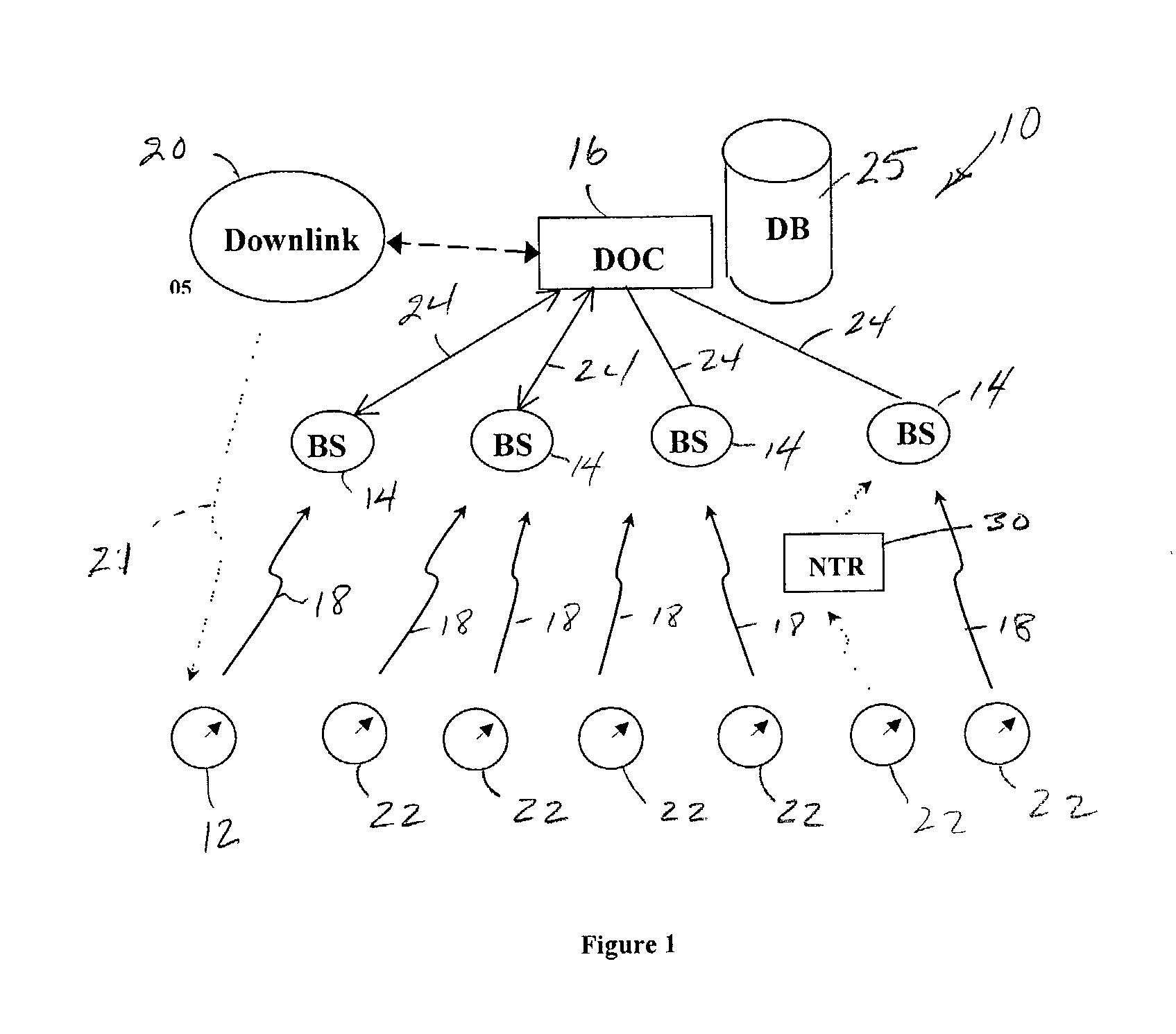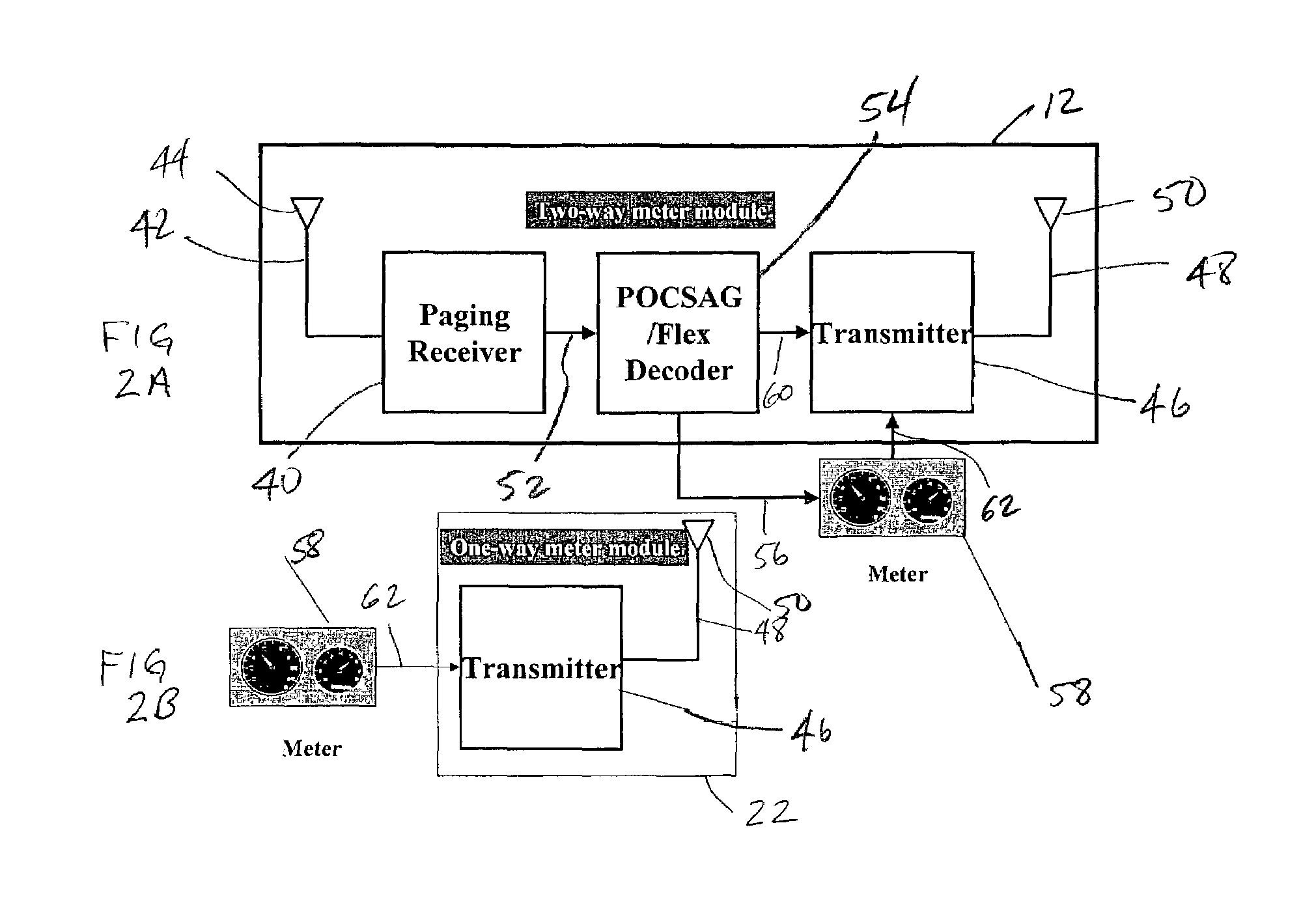Modular wireless fixed network for wide-area metering data collection and meter module apparatus
a fixed network and wide-area metering technology, applied in the field of wireless fixed network modules for wide-area metering data collection and meter module apparatus, can solve the problems of large excess capacity, inefficient configuration, and significant limit the number of meters a node can serve, so as to facilitate network planning flexibility, optimize cost and capacity, and increase the effect of infrastructure deployment gradual and cost-efficien
- Summary
- Abstract
- Description
- Claims
- Application Information
AI Technical Summary
Benefits of technology
Problems solved by technology
Method used
Image
Examples
first embodiment
[0089]A one-way meter module 22 (FIG. 2B) transmits a metering data air message once every preprogrammed time interval, and a block diagram of the module is depicted in FIG. 15. In this particular implementation, the module includes a meter interface logic module 180 that collects consumption, tamper status and other data from an associated utility meter 58. It should be noted that although FIG. 15 depicts a single meter interface module 180 for purposes of simplification, multiple meter interface logic modules may be used in a single transmitter to interface with corresponding utility meters. The meter interface logic module 180 operates continuously and draws only a small amount of current. It includes several standard sensors (not shown), such as magnetic reed switches or optical sensors to track consumption, tilt sensors for tamper detection, and voltage sensors to determine outage or power restoration events.
[0090]The module 22 also includes a controller module 182, which typic...
second embodiment
[0092]In the illustrated embodiment, the controller module 182 uses the auxiliary wake-up circuit 196 to manage a minimal power consumption level during the times in which the meter module is inactive (“sleep mode”). Upon receipt of a command from the controller 182, the wake-up circuit 196 operates an electronic switch to disconnect the power supply from the controller itself, thereby also disconnecting the RF transmitter module to be described, thus allowing very low overall power consumption of the meter module during a “sleep” period. The wake-up circuit connects power back to the controller when triggered by an output from the meter 58 by way of interface 180, by an external device by way of the port 190 and interface 186, or by the timer 204. This capability of the meter module is a particular value in battery-operated transmitters. However, it will be understood that if there is an unlimited power source, as may be the case if utility meter 58 is an electric meter, the contro...
PUM
 Login to View More
Login to View More Abstract
Description
Claims
Application Information
 Login to View More
Login to View More - R&D
- Intellectual Property
- Life Sciences
- Materials
- Tech Scout
- Unparalleled Data Quality
- Higher Quality Content
- 60% Fewer Hallucinations
Browse by: Latest US Patents, China's latest patents, Technical Efficacy Thesaurus, Application Domain, Technology Topic, Popular Technical Reports.
© 2025 PatSnap. All rights reserved.Legal|Privacy policy|Modern Slavery Act Transparency Statement|Sitemap|About US| Contact US: help@patsnap.com



